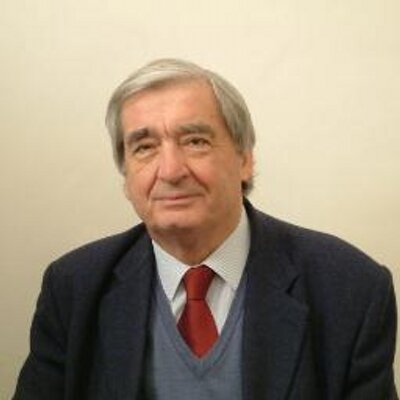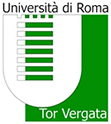Profile
 |
Piergiorgio Picozza Picozza@roma2.infn.it Office/Location Dept. of Physics Tel: +39 06 72594576 |
Biography
Biography
Piergiorgio Picozza is Professor Emeritus at the University of Rome Tor Vergata. He has been full Professor of Nuclear and Subnuclear Physics and .Astroparticle Physics at the University of Rome “Tor Vergata” until November 2011. He got his degree in Physics at the University of Rome “La Sapienza”. He has been CNEN and INFN researcher and in 1882 he moved to the University as Professor, before at Rome “La Sapienza” and later at the University of Rome Tor Vergata. From 1981 to 1988 he served as a member of the National Committee for Physical Sciences of the National Research Council (CNR) and representative of CNR in the Board of Directors of the National Institute of Nuclear Physics (INFN). From 1988 to 1994 he was a member of the INFN Executive Board and, from 1990 to 1994, he also hold the position of Vice-President. He was the Italian representative in the European Committee for Nuclear Physics (NuPECC) for seven years. Coordinator of the PhD School in Physicsfrom 1995 to 2011, he was also representative of the Science Faculty in the Executive Committee of the PhD School of the University of Rome “Tor Vergata”. He was Director of several Master in different fields of Physics. From 2000 to 2004 he was a member of the Board of Directors of “Centro Fermi”. From 2001 to November 2007 he was Director of the INFN Division of Rome Tor Vergata and member of the INFN Board of Directors. At present, he is member of the Board of Directors of “INFN” as representative of the Minister of Economic Development”. He is member of several national and international committees and international referee of different institutions. He was, and presently is, Principal Investigator of several space missions. He is author of more 450 papers published in the major international journals with about 13000 citations (Scopus). He has given many invited talks at the most important Conferences and many seminars in the primary Universities and Research Centers. He has been awarded with the AGILE collaboration the Bruno Rossi Prize 2012 for the High Energy Astrophysics.
Research
Research Activity
For many years the scientific activity of Piergiorgio Picozza carried out in the fields of Nuclear Physics and Elementary Particles at the accelerators of CERN, INFN Laboratories of Frascati and CEA Laboratories of Saclay. Relevant results were obtained in the study of the nuclear structure, discovery of new elementary particles, verification of invariance laws of particle physics, and in the realization by innovative techniques of gamma and particle beams.
Since 1987 Piergiorgio Picozza has been mainly involved in space researches performed with the techniques used in elementary particle physics at accelerators. This activity has been carried out by experiments on board Stratospheric Balloons, small and large size Satellites, MIR Space Station and International Space Station. It has mainly concerned the study of the electronic, nuclear and isotopic components of the cosmic rays, with special regard to the search for antimatter and signals of dark matter annihilation, the study of high energy gamma radiation, the monitoring of the radiation environment inside the MIR and ISS Space Stations and the study of the effects of the ionizing radiation on the central nervous system of astronauts in space.
The observations on stratospheric balloons, conducted during five launch campaigns from 1989 to 1998 and dedicated to the search for primordial antimatter, were carried out in the frame of an International Collaboration including the NASA GSFC, American, Swedish and German Universities, and six INFN Sections and Laboratories led by Piergiorgio Picozza. On 1993 Piergiorgio Picozza promoted, and after led, the research programme RIM (Russian Italian Missions), in the frame of a collaboration with the Russian Institutes MEPhI and FIAN Lebedev in Moscow and Ioffe in St. Petersburg, the University of Siegen in Germany and the KTH in Stockholm. The program consisted of scientific missions performed on Russian and Italian satellites and space carriers as well as on the Space Stations MIR and ISS.
Two experiments, NINA, lunched in July 1998 on board the Russian satellite Resurs n.1-04 and NINA2 in 2000 on board the Italian satellite ASI-MITA, were dealing with the study of the nuclear and isotopic components of cosmic rays at low energies and the study of solar activity.
Later, Piergiorgio Picozza led the realization of the experiment PAMELA, installed on board the Russian satellite Resurs DK1, put in orbit on June 15th, 2006 by the Russian rocket Soyuz-U and currently yet orbiting. This was the most important space mission ever accomplished in the field of the search for antimatter and dark matter annihilation signals. Of very remarkable scientific importance are the results obtained on the antiproton-proton ratio and on the positron-electron ratio which arouse a great interest also outside the scientific community of reference with more than 1500 citations. Hundreds theoretical papers have been published in a short time to interpret the positron data as dark matter annihilation signals, even if other hypotheses have being considered. Relevant are also the results obtained on the proton, helium, electron, positron and nuclei energy spectra of the cosmic radiation, essential for a better knowledge of the mechanisms of production, acceleration and propagation of the cosmic rays in the Galaxy. Concerning the study of the Sun, the PAMELA experiment is allowing a continuous monitoring of the solar activity and its influence on the cosmic ray fluxes and the measurement of the particle energy spectrum in solar flares. An Antiproton radiation belt has also been discovered.
Piergiorgio Picozza was one of the major promoters of the AGILE space mission for the study of gamma radiation, in orbit since April 2007. The results obtained in the detection of Gamma Ray Bursts and in the discovery of new Pulsars and Powerful Gamma-Ray Flares from the Crab Nebula (this rewarded with the Bruno Rossi Prize 2012) have opened, together with the Fermi mission, a new way for the knowledge of the most violent processes in the Cosmos.
At present, he is also Principal Investigator of the space JEM-EUSO program for the detection from space of Ultra High Energy Cosmic Rays.
Moreover, he is PI of the CSES space mission conducted in collaboration with the Chinese Space Agency for the study of magnetosphere phenomena possibly connected with terrestrial catastrophic events. The CSES1 mission has been launched on February 2018.
The scientific activity of Piergiorgio Picozza regarded also the field of the life science in space. The first missions of the RIM program, Si-Eye 1 and Si-Eye 2, on board the Russian Space Station MIR, in the periods 1995-1998 and 1998-2000, respectively, the Si-Eye 3 in 2002 and ALTEA in 2006, both on board the ISS, were dedicated to the study of the risks by ionizing particles for the astronauts and to the continuous ionizing radiation monitoring inside the Space Stations. They provided and are providing a deal of data essential for the planning of interplanetary flights.
Publications
Selected Publications
- Unexpected Cyclic Behavior in Cosmic-Ray Protons Observed by PAMELA at 1 au; The Astrophysical Journal 852, L28 (2018)
- Multi-messenger Observations of a Binary Neutron Star Merger; The Astrophysical Journal Letters, 848:L12 (59pp), 2017
- AGILE Observations of the Gravitational Wave Source GW170104; The Astrophysical Journal Letters, 847:L20 (7pp), 2017
- Ten Years of PAMELA in Space; Rivista Nuovo Cimento Vol. 40, Issue 10 (2017)
- Time Dependence of the Electron and Positron Components of the Cosmic Radiation Measured by the PAMELA Experiment between July 2006 and December 2015; Physical Review Letters 116, 241105, (2016)
- New Upper Limit on Strange Quark Matter Abundance in Cosmic Rays with the PAMELA SWpace Experiment; Physical Review Letters 115, 111101, (2015)
- The PAMELA mission: heralding a new era in precision cosmic ray physics; Physics Reports 544, 323 (2014)
- Cosmic-Ray Positron Energy Spectrum Measured by PAMELA; Phys. Rev. Lett. 111, 081102 (2013)
- Pamela Measurements of Cosmic-Ray Proton and Helium Spectra; Science Vol. 332, 69 ( 2011)
- Discovery of Powerful Gamma-Ray Flares from the Crab Nebula; Science, Vol. 331,. 73 (2011)
- Detection of Gamma-Ray Emission from the Vela Pulsar Wind Nebula with AGILE. Science, Vol. 327,. 663 (2010)
- PAMELA results on the cosmic-ray antiproton flux; Phys. Rev. Letters 105, 121101 (2010)
- Discovery of extreme particle acceleration in the microquasar Cygnus X-3; Nature 462, 62 (2009)
- Observation of an anomalous positron abundance in the cosmic radiation. Nature, vol. 458, 607 (2009)
- The Large Area Telescope on the Fermi Gamma-ray Space Telescope Mission. The Astrophysical Journal, vol. 697; 1071 (2009)
- PAMELA – A payload for antimatter matter exploration and light-nuclei astrophysics; Astroparticle Physics, Vol. 27, 4296, (2007)
- Space travel: Dual origins of light flashes seen in space; Nature, Vol. 422, 680 (2003).


